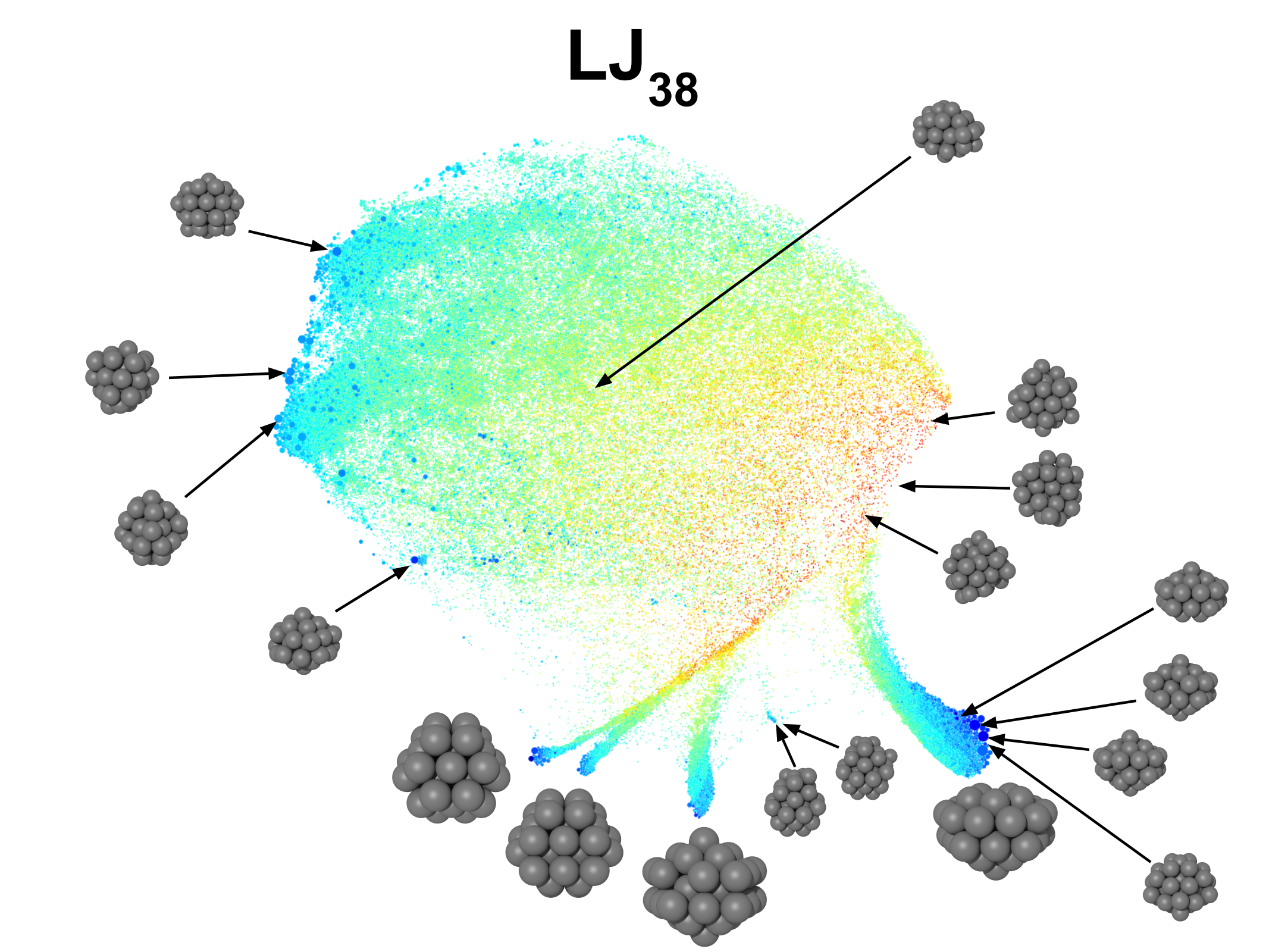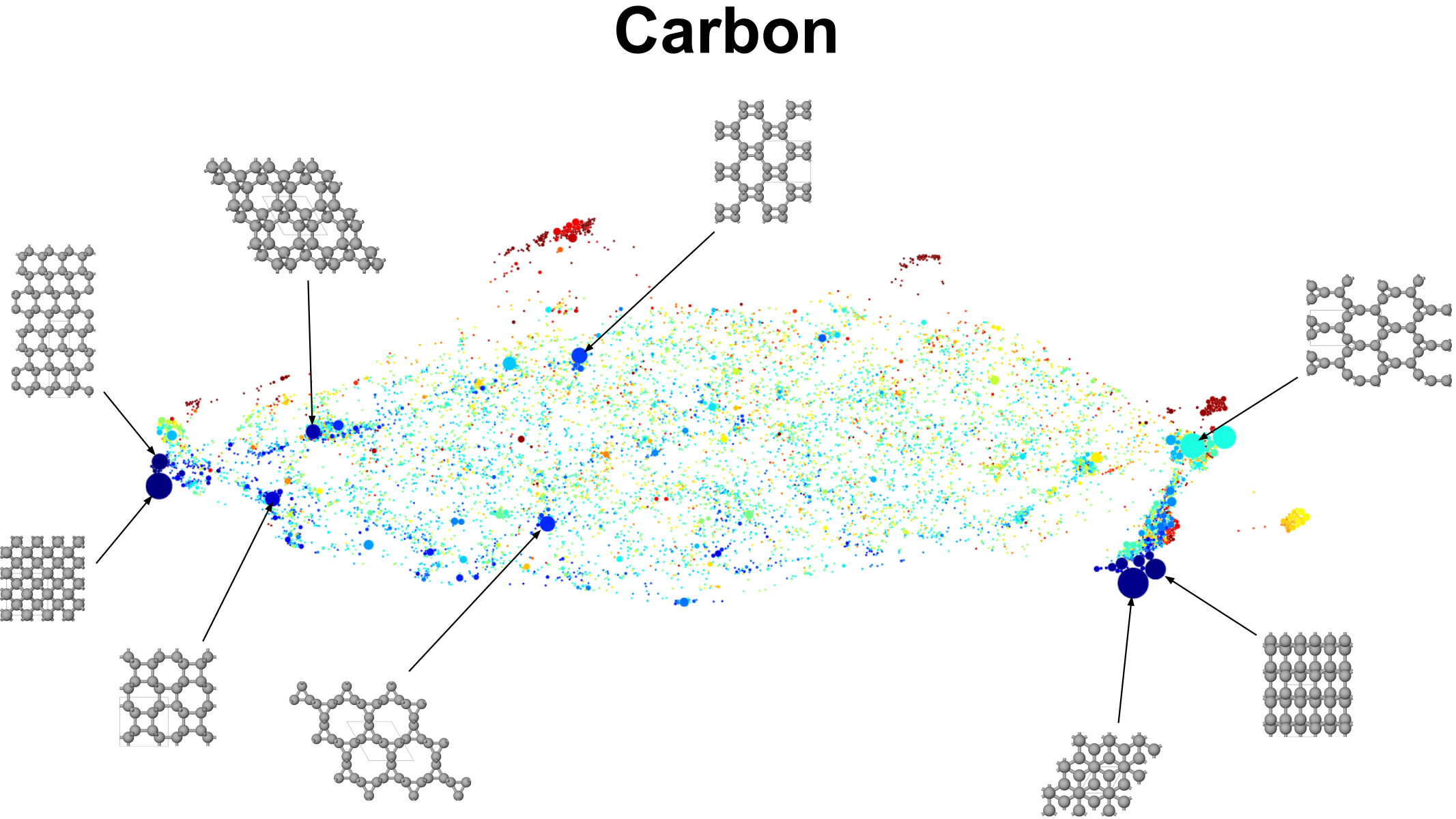Stochastic Hyperspace Embedding And Projection
Stochastic Hyperspace Embedding And Projection (SHEAP) is a dimensionality reduction method designed for visualising potential energy surfaces.
Computational structure prediction can assist the discovery of new materials. One searches for the most stable configurations of a given set of atomic building blocks, which correspond to the deepest regions of an energy landscape—the system's energy as a function of the relative positions of its atoms. To explore these landscapes efficiently, it is important to understand their topologies. However, they exist in spaces with very large numbers of dimensions, making them difficult to visualise. SHEAP uses dimensionality reduction through manifold learning to effectively visualise the distribution of stable structures across a high-dimensional energy landscape.




